Peony Flowered Voodoo Lily
This is one of the larger members of the genus Amorphophallus. The leaf can be as tall as five or six feet. With a pebbly textured petiole that makes it look like lizard skin. The inflorescence pictured to the right has a quarter on the rim for size reference, and that inflorescence is on the small side.
The flowers are very large, but they open right above the ground. The top of the spadix is bulbous and wrinkled, sometimes even resembling a brain. Truly an exotic flower.
I have found this species to be extremely easy to grow. Here in Florida they do as well in the ground as they do in a container. They grow many offshoots from the tuber, and can be easily propagated by dividing them once they have gone dormant. The tubers eventually get rather large. The tubers are edible and are grown commercially throughout Southeast Asia.
It serves as a source of protein as well as starch. It has long been used as a local staple food in many countries such as the Philippines, Java, Indonesia, Sumatra, Malaysia,Bangladesh, India, China and south eastern Asian countries. The tubers are boiled or baked, and consumed as a vegetable.
Origin
Southeast Asia
Family
Araceae
Binomial nomenclature
Amorphophallus paeoniifolius
Common names
Peony flowered voodoo lily
Description
Amorphophallus paeoniifolius grows one, large, radially symmetrical, compound leaf, up to 6′ tall, and 5′ in diameter. They superficially resemble a small palm tree. The petiole of the leaf is mottled with an attractive pattern of light green splotches. The surface of the petiole is pebbly and resembles lizard skin. The inflorescence which emerges in the Spring, once every two to five years, is very large. The purple spathe is 15-24″ in diameter and can be yellow or white in the center. The tip of the spadix is reddish-purple, bulbous, and folded, giving the impression of a brain. The leaf is grown using carbohydrates stored in the tuber. The tuber is completely used up in this process. During the growing season, a new tuber begins to form below the plant, storing resources obtained by the leaf and roots for use in growing the leaf or inflorescence in the following Spring. For larger plants, the tubers can be up to twenty pounds.
Height
5′-6′ tall.
Temperature/Zone
zone 9b, 32°F. This plant prefers humid conditions. It goes dormant in Winter. The tubers can be dug up and Wintered in a paper bag, anywhere in the USA.
Light
Part sun to shade.
Water
Keep them evenly hydrated while they are growing, but allow them to dry out completely while they are dormant. If they are too wet while they are dormant they can rot.
Fertilizer
It is important to supply them with phosphorus. Phosphorus is what allows them to grow a larger tuber. Since they grow a new tuber each year, this is largely what determines the size of the plant in the following year. Just as I do for gingers, I use a 1/4 strength liquid fertilizer, formulated for tomatoes on these.
Cultivation
Plant the tuber in very rich, well draining soil. Give them a good amount of root space. Plant it in the pot it will be in for the whole season. You should not transplant them while they are growing. I’ve done it, but it is best not to disturb their roots once they are growing. If the leaf petiole is broken or badly damaged during transplantation it will often cause them to die. It is for this reason that I don’t ship them while they are growing. This species can grow multiple leaves in a year though, so don’t give up hope if you happen to break the leaf.
Pests
I have not found any pests to be a problem for this plant in Florida.
Back to Amoprphophallus
Growth and Productivity of Elephant Foot Yam (Amorphophallus paeoniifolius (Dennst. Nicolson): an Overview

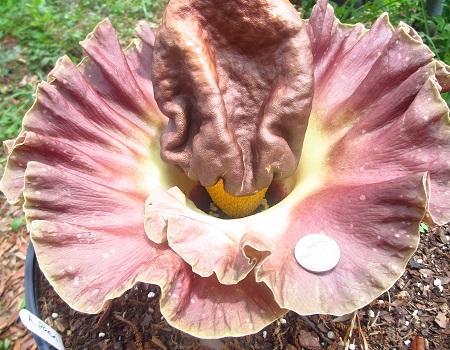
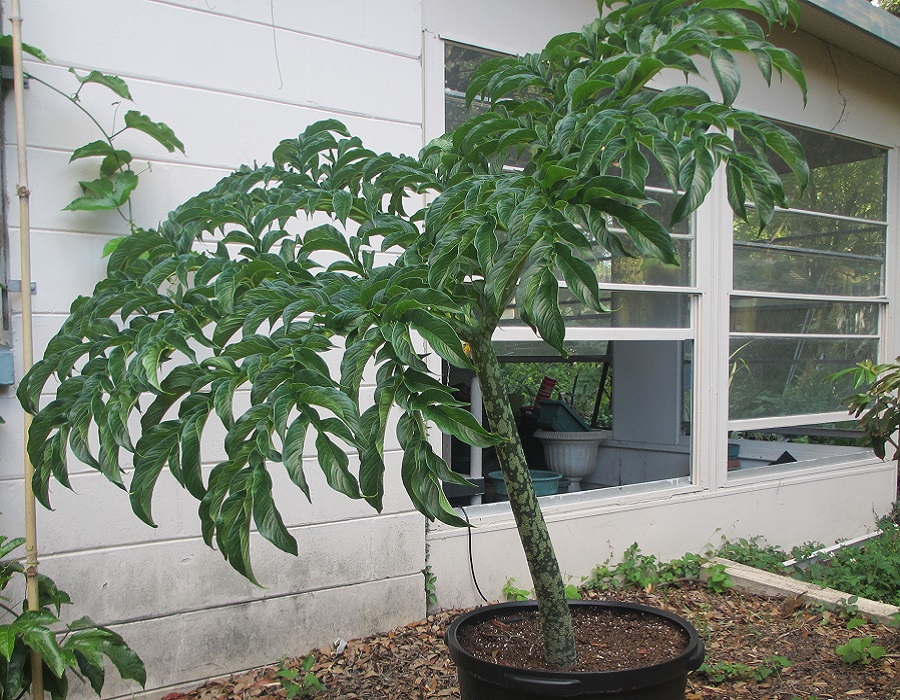
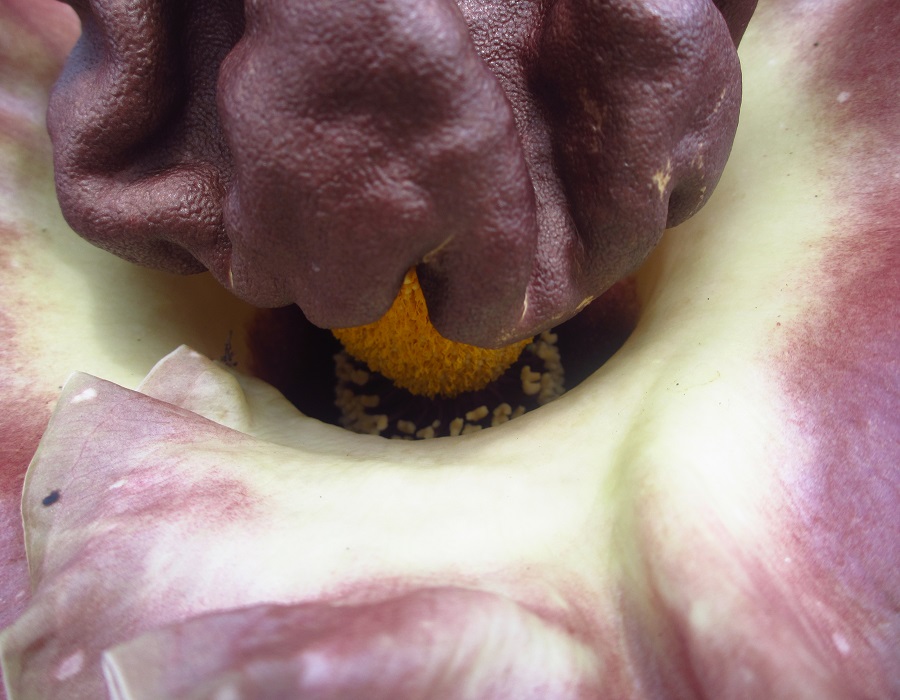
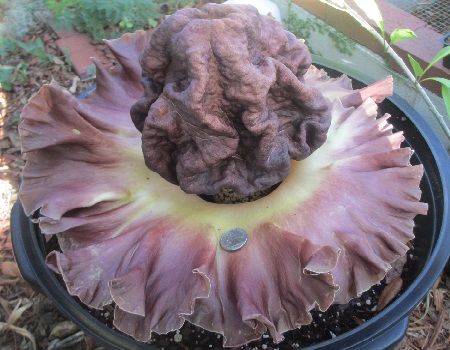

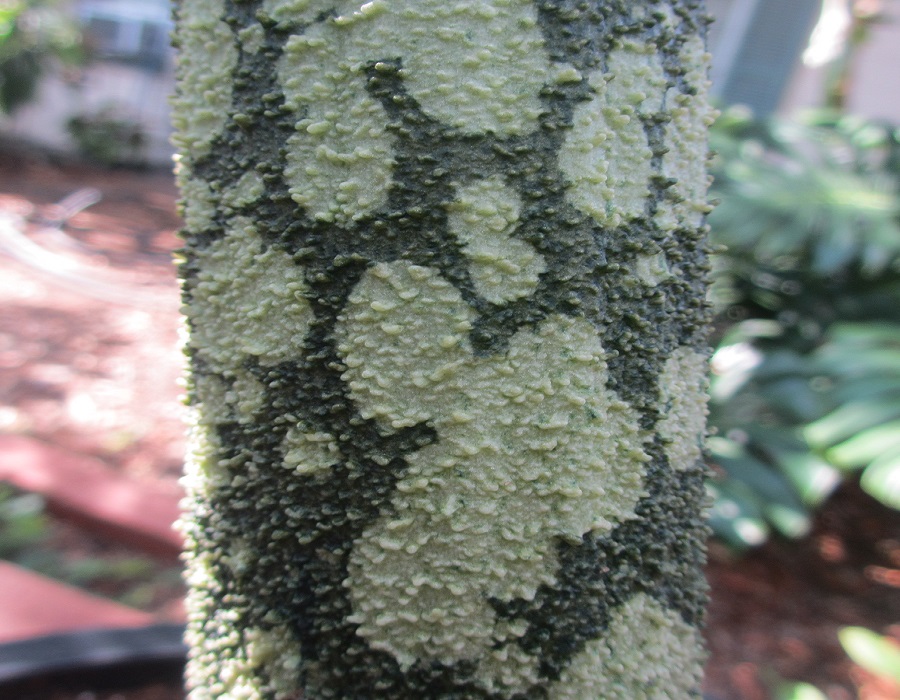

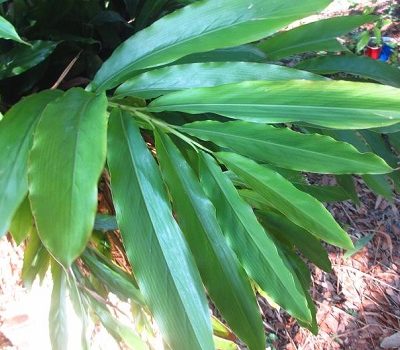

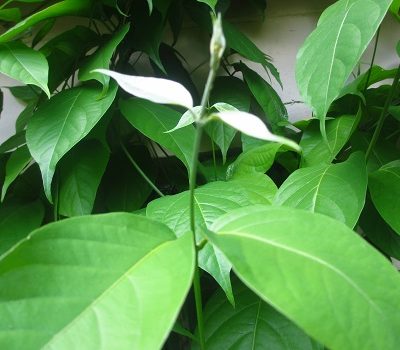


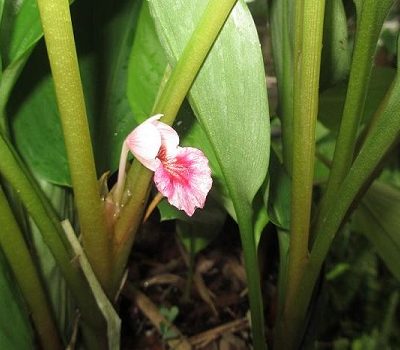

Appreciation to my father who stated to me regarding this weblog, this blog is genuinely remarkable.
please let me know,when you have
Amorphophallus paeoniifolius
$9.99
available!
I have them available now, but not for much longer. In another couple of weeks I’ll plant them out for the year.
Is it still possible to purchase a corm?
Unfortunately no. They are planted out for the year. I’ll have tons ready to go in Oct-ish. The best/biggest ones go first, so best not to wait until March. I’ll have quite a few other species for sale as well. I’ve been expanding my Amorphophallus collection. Cheers!